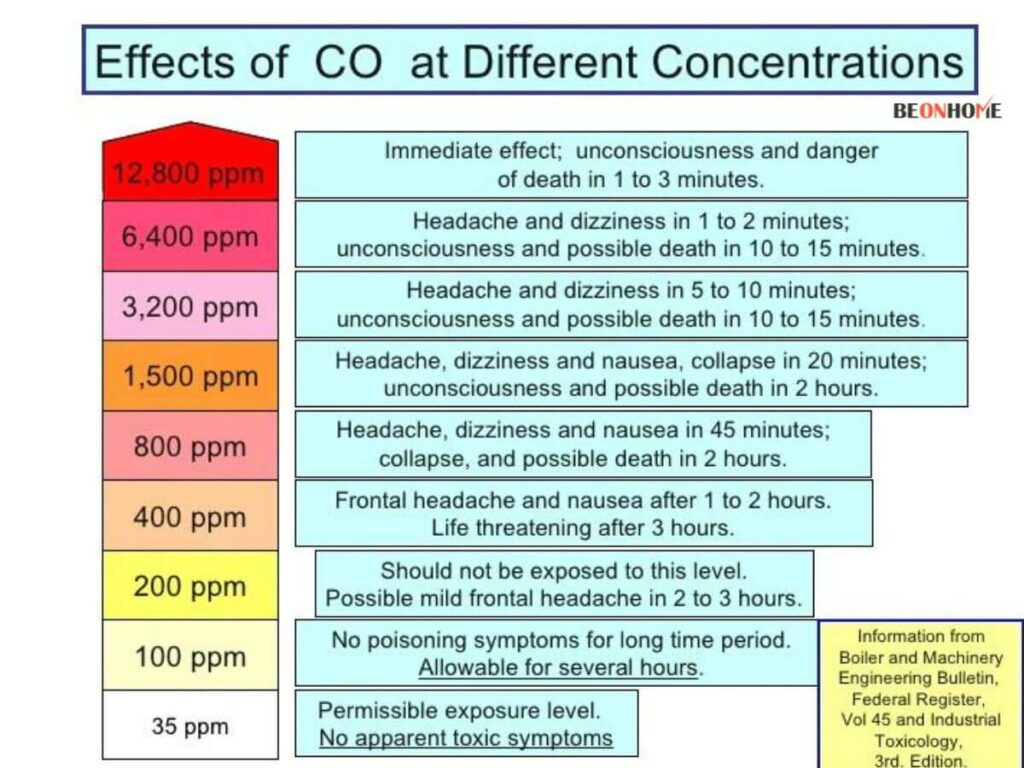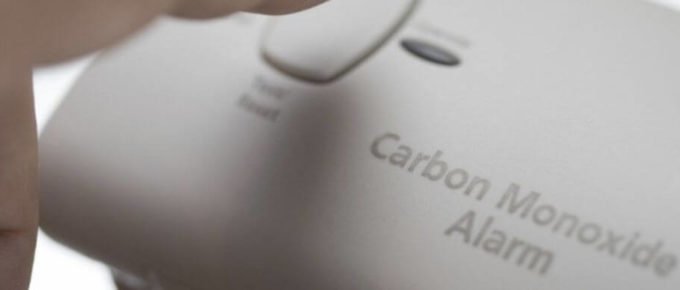Before you realize it, you could be inhaling a poisonous gas that claims over 200 lives every year. It is emitted by every fuel-burning-based device like a home’s furnace, fireplace, charcoal grill, or gas stove.
So what is Carbon Monoxide (CO)? Carbon Monoxide is a gas that is usually harmless in an open and well-ventilated area but is extremely poisonous in a closed-off area.
Humans can’t detect this gas because it has no color, no odor, and no taste. That is why we believe that the accurate placement of carbon monoxide alarm is essential in every household.
Just like a smoke alarm, a carbon monoxide alarm detects CO in the air and alarms us about it. If you value your’s and your family’s health, you should consider investing in a carbon monoxide alarm. In this article, we will go on about how the CO alarm works and how to prevent an accident.
How To Read A Carbon Monoxide Alarm?
Quick Navigation
Learning how to read your carbon monoxide alarm can help prevent a life-threatening situation. It is important to know whether your alarm is alerting you about the high CO level in the air or it is almost out of battery.
The alarm will usually warn you by beeping in a particular pattern. If you want to know about your specific model’s beeping pattern, you should consult its user manual.

1. Beeps 4 times, followed by a pause:
When the alarm goes off like this, then that means that there is carbon monoxide in the air. In that case, you should evacuate immediately and call 911.
2. 1 beep every minute:
When your alarm is going off in this pattern, then that means it is low in battery. In such cases, you should replace the battery as soon as possible.
3. 5 beeps every minute:
If your alarm is going off in this pattern, then that means it has reached its end. Usually, carbon monoxide alarms have a life expectancy of 5 to 7 years. If you hear this pattern, you should replace the alarm as soon as possible.
Do Carbon Monoxide Detectors Detect Low Levels?
It might seem like carbon monoxide alarms are only used to detect high CO levels in the air. But that’s not true, a carbon monoxide alarm also detects a low level of carbon monoxide in the air as it can still be harmful.
Usually, the concentration of the gas you are inhaling is measured in PPM or Parts Per Million. So anything below 50 PPM is considered low. Even though 50 PPM is considered a low level, it can still be lethal if consumed for a long period.
The symptoms might include nausea, mild headache, and shortness of breath. If you are continuously exposed to 50 ppm of CO, the alarm should go off in 8 hours. After hearing the alarm, you should immediately seek fresh air and call 911.
There are low-level CO alarms that can even detect as low as 25 ppm and will alarm you after a minute. Although a low-level CO alarm cannot replace your typical CO alarm, it still has its benefits.
People who are more sensitive to the effects of CO might require a low-level CO detector. These include small children, the elderly, pregnant women, and people with medical conditions.
What Level Of CO Ppm Is Dangerous?

It is important to know what level of carbon monoxide is considered dangerous to prevent adverse health problems. Anything above 40 ppm is considered dangerous,
but some people are more sensitive to the effects of carbon monoxide have on their health. For them, ppm above 25 can be harmful.
These are the various CO ppm levels you should know and be careful about:
1. When the carbon monoxide level is 40 ppm, the alarm will go off in 10 hours.
2. When the carbon monoxide level is 50 ppm, the alarm will go off in 8 hours. For a healthy adult, continuous exposure to this much concentration should pose no problem. As stated by OSHA (Occupational Safety and Health Administration), exposure for 8 hours is the maximum acceptable concentration.
3. When the carbon monoxide level is 70 ppm, the alarm will go off in 1 to 4 hours.
4. When the carbon monoxide level is 150 ppm, the alarm will go off in 10 to 50 minutes.
5. When you are exposed to 200 ppm for 2 to 3 hours, you will experience nausea, dizziness, mild headache, and fatigue.
6. When the carbon monoxide level is 400 ppm, the alarm will go off in 4 to 15 minutes. If you are continuously exposed to this much carbon monoxide for 1 to 2 hours, you will experience serious headaches. It can be life-threatening if consumed for 3 hours.
7. If the carbon monoxide level is 800 ppm. You can experience symptoms like convulsions, nausea, and dizziness within just 45 minutes. Rendered unconscious within 1 hour and death within 2 to 3 hours.
8. If the carbon monoxide level is 1600 ppm. You can experience symptoms like headache, nausea, and dizziness within just 20 minutes and death within 1 hour.
9. If the carbon monoxide level is 3200 ppm. You can experience symptoms like headache, nausea, and dizziness within just 5 to 10 minutes and death within 1 hour.
10. If the carbon monoxide level is 6400 ppm. You will experience serious symptoms like headache, nausea, and dizziness within just 1 to 2 minutes and death within 25 to 30 minutes.
11. If the carbon monoxide level is 12,800 ppm. You will die within 1 to 3 minutes of exposure.
What Is A Normal Carbon Monoxide Reading In A House?
Depending on your house, the level of Carbon monoxide may vary. Most homes usually have a reading around 0.5 to 5 ppm.
But it can also go as high as 30 ppm if your fuel-burning devices aren’t properly maintained. Just make sure you Choose the best carbon monoxide for your home
If your home has a high ppm, you can follow these steps to reduce the amount of carbon monoxide in the air.
- Make sure your house is properly ventilated, and if you use a gas stove, make sure to install an exhaust fan to release the gas outside.
- Don’t turn on your car; let it be idle inside your garage.
- Properly maintain your fuel-burning devices and have professionals check them annually.
- While using the fireplace, make sure to open the flues.
- Buy a vented space heater instead of an unvented space heater.
These were some of the steps you could follow to reduce the amount of carbon monoxide inside your home.
Final Talk
Carbon monoxide is a lethal gas that can cause life-threatening health issues and even death if exposed for a long time in an enclosed area. It is a type of gas that can’t be detected by humans, so having a carbon monoxide alarm should be a must in every household. If possible, we recommend installing a carbon monoxide alarm in every bedroom, kitchen, and garage.







Leave a Reply